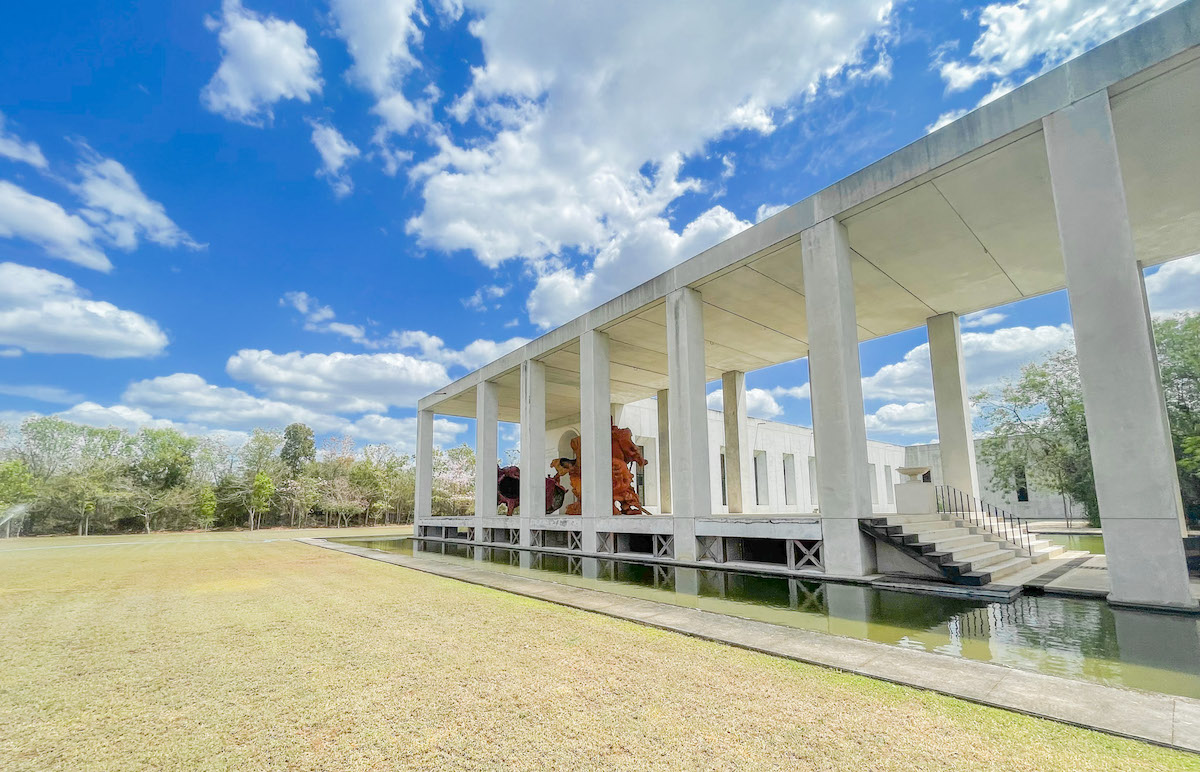
Visit Plantel Matilde | Stunning Monastic Grandeur in the Yucatan Jungle
Marveling at incredible contemporary architecture doesn’t exactly spring to mind when plotting your Yucatan getaway. And why would it? Neo-Baroque mansions, Skittle-colored facades, sprawling haciendas, colonial churches, and the decayed beauty of Mayan ruins rank high on the list of Yucatan’s greatest temptations.
But ensconced in a clearing in the jungle just 40-minutes from downtown Merida lies Plantel Matilde, a stunning and enormous contemporary confection that defies everything you and I think we know about the region’s diversity of architecture. A massive dwelling tethered to the earth by water and concrete, and by shadow and light, Plantel Matilde gleaned its inspiration from the hallowed church cloister, the traditional Spanish hacienda, and the region’s pre-Hispanic structures, reimagining these on an imperial scale with a monastic and modern twist.
TABLE OF CONTENTS
Fundación Javier Marin
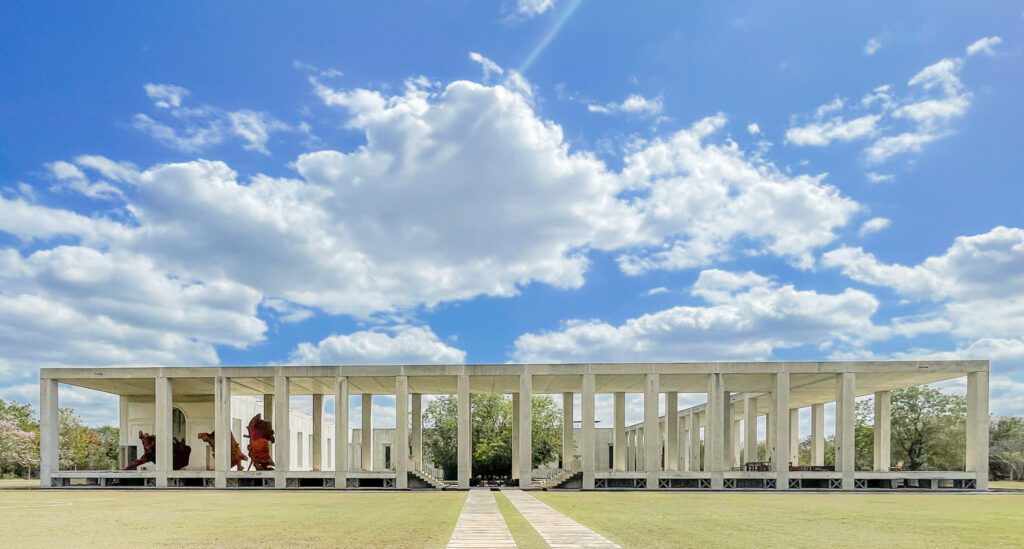
Pitched on the former site of an agave hacienda in the sleepy Yucatan village of Sac Chich, Plantel Matilde is the atelier and private residence of celebrated Mexican sculptor, Javier Marin. A prolific artist whose oeuvre spans 30 years, Marin’s abstract pieces explore the construction and deconstruction of humanity. His work has been the subject of 90 individual exhibitions, and shown in over 200 collective international exhibitions.
In 2013, Marin launched Fundación Javier Marin, a non-profit organization dedicated to promoting the plastic and visual arts, as well as supporting the work of emerging artists. Plantel Matilde, which Marin designed in concert with his brother, the architect Arcadio Marin, is a prodigious manifestation of his foundation’s vision. In addition to being the residence and studio of the artist, Plantel Matilde serves as a meditative space and workshop for artists hand-selected by Marin. Through the support of the foundation, artists are welcome to stay for a stretch and do what they do best — create.
Recently, I visited Plantel Matilde on a beautiful and breezy Friday afternoon. My anticipation was great, as I’ve been itching to explore Plantel Matilde for the better part of a year. Until recently, it hasn’t been open to the public, and even now how to visit Plantel Matilde remains a fairly well-guarded secret. If you’d like to explore this serene and riveting place (of course you would!), I share details on how to visit Plantel Matilde at the end of this article.
A Mirage in the Jungle
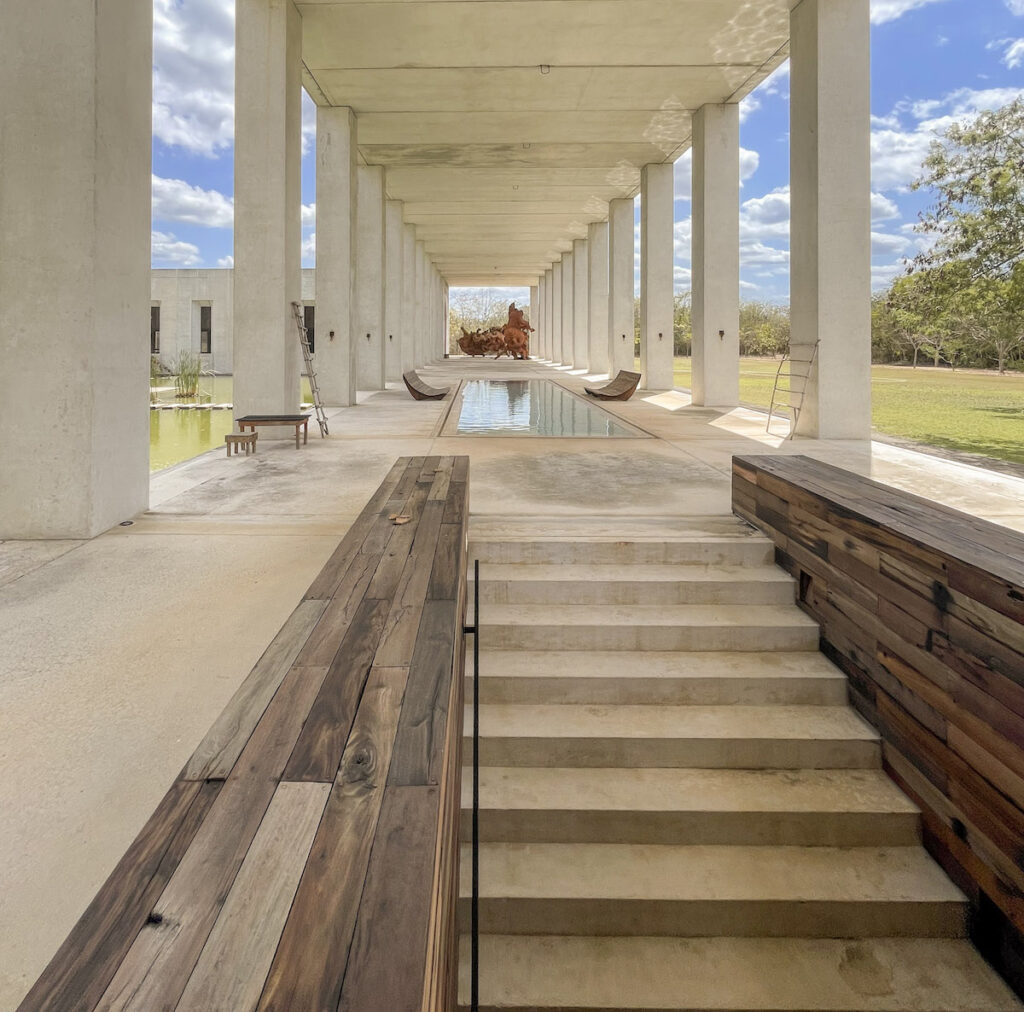
I exit the main highway to get to Sac Chich, bouncing over unmarked dirt roads through pueblo and jungle. Overheated dogs laze in my path while azure and sunburst-colored birds sing and flit about the thick canopy of trees overhead. It’s an unlikely lead up to a contemporary architectural gem. At times, a failing phone signal wreaks havoc on my GPS, making me question if I’m still on the right track.
Navigation returns just in to end my journey in front of a nondescript steel gate affixed to a rambling stone wall. If I have any doubts Marin’s mythical edifice lies behind here, the two cars idling at the gate before me, one behind the other, affirm this could possibly be the place. In a few minutes the metal gates open up and a red SUV emerges. Diego, our docent for the next few hours, exits the vehicle. He moves from car to car, politely introducing himself and bidding us to follow him inside to the main attraction. Into the jungle compound our caravan goes, metal gate clamping shut behind me.
We trek deeper along a dusty, narrow road lined with wild and magnificent trees. About four minutes in, a flattened clearing magically appears, and a mammoth structure rises up omnipotently over the neat green ground. This unexpected sight in the bowels of the Yucatan jungle could easily be a mirage.
I park, exit my car and behold the thing. I am struck. Perhaps the impact of Plantel Matilde on the senses would be slightly lessened in an urban place dense with other contemporary concrete structures. But I’ve been living in Old World Merida for the past few years. Feasting my eyes on Matilde is like coming across a Picasso.
Plantel Matilde exists in the shape of a monumental cube that is at once hulking and light. Two sides comprise a pair of never-ending arcades supported by 40-foot concrete columns. The columns are domineering, yet still they encourage the eye and mind to wander everywhere between their open spaces. The remaining two sides of Matilde form a pair of enclosed, 230-foot galleries pocked with windows resembling the shape of matchsticks. The roof above doubles as an observation deck for taking in the surrounding earth and heavens.
The arcades and galleries wrap around a pretty reflective pool. A central island grown over with native trees and plants floats peacefully in the middle, a kind of meditative womb. I want to curl up here with some spiritual epic. The Bhagavad Gita sounds goods.
The entire edifice is unadorned. A gargantuan blank canvas planted valiantly in the terra firma.
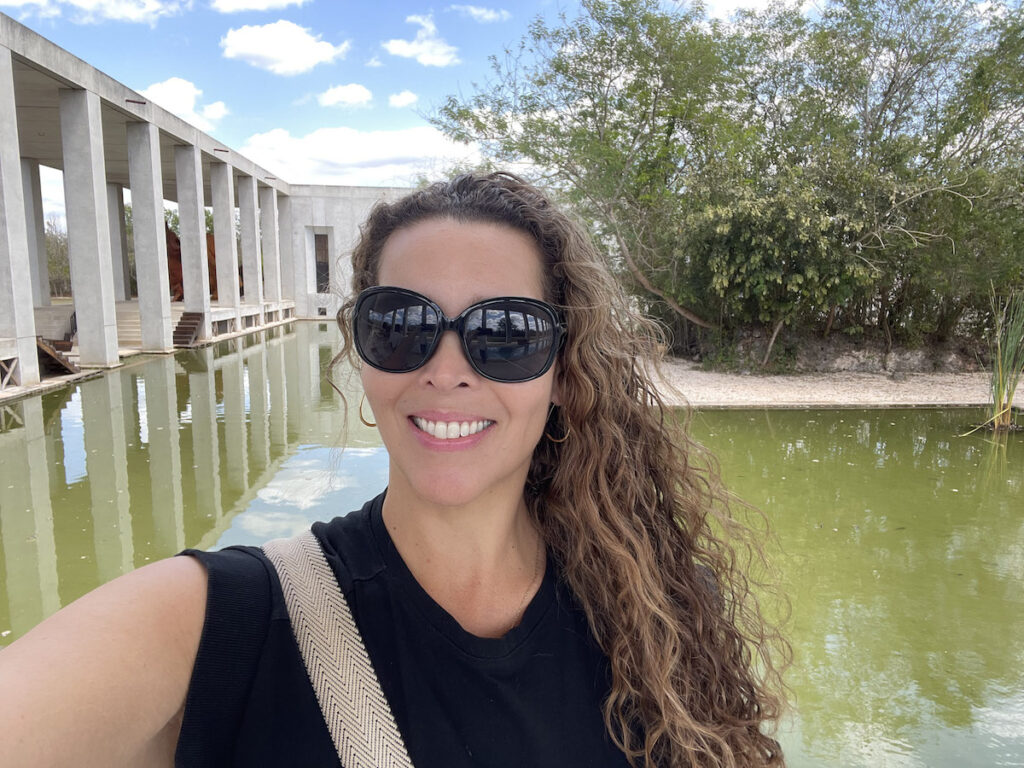
Over my left should lies the meditative island. Photo credit: The World I Roam.
Livability, Sustainability & The Artist’s Hand
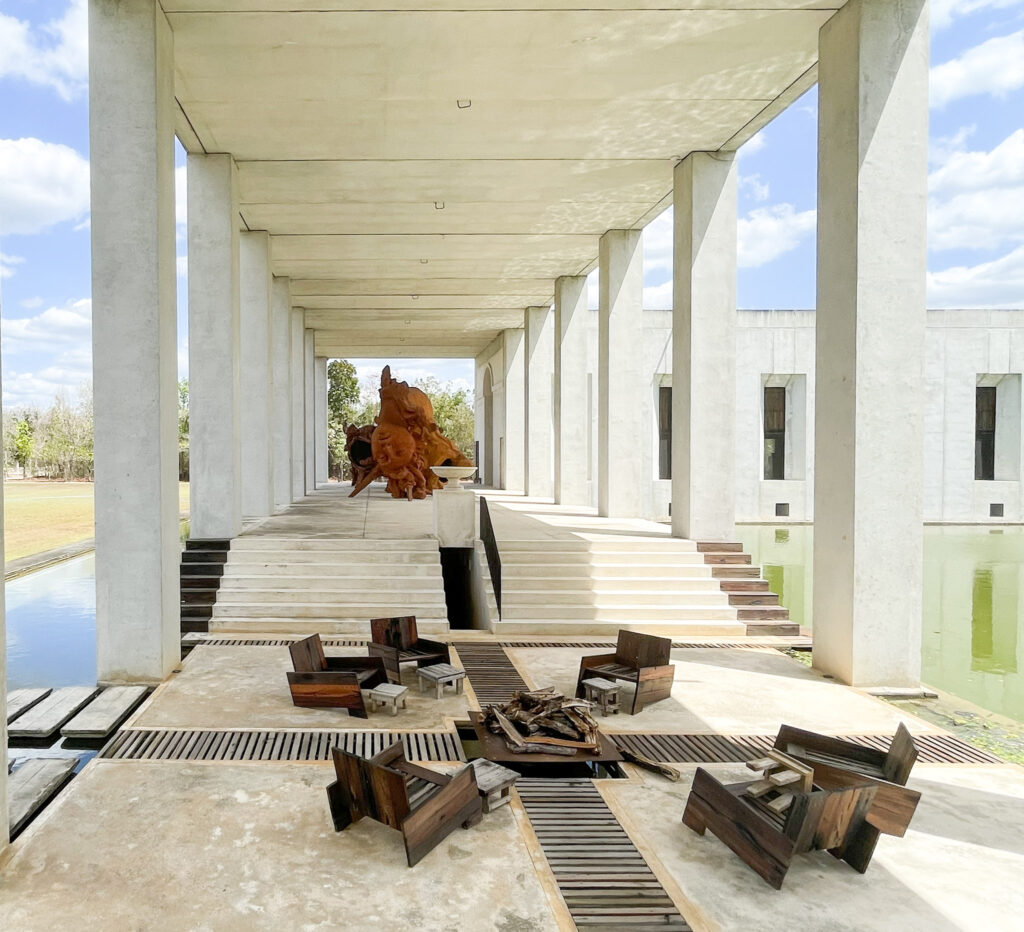
We’re a small group touring Plantel Matilde. Just me and a pair of well-heeled couples. We wander alongside Diego through the airy arcade, everyone snapping away furiously on cameras and cell phones. Diego is warm and personable and speaks excellent English regaling us with details about Plantel Matilde and its resident artist.
Diego points out the practical aspects of Matilde’s design, which, he says, contribute to its livability and sustainability alike. Matilde’s above-ground elevation grace it with a refreshing airflow that nixes the need for air conditioning in the scorching Yucatan heat. Airflow is also encouraged by the lack of glass on the windows. Windows are instead covered by shutters that open up to screens.
Rectangular pools of water snuggle up against the building’s perimeter on all four of its sides. This “moat,” as Diego calls it, prevents common local critters like scorpions, spiders or snakes from entering the building. Koi and carp glide tranquily through the pools, as well as through the waters at the center of Matilde. Their tasked with gobbling up mosquito larvae, which reduces the chance of pestilence caused by one of the region’s most prevalent pests.
Colossal sculptures of fallen, disembodied heads exist in various spots around the colonnades. These are, of course, works by Javier Marin. I find them daring and deeply fascinating. Diego explains that each piece can take up to six months, from concept to casting to completion. Teams of a dozen or more people work together assembling the sculptures, which can contain up to 90 individual pieces. The final touch, however, is always that of Marin. His is the final hand to layer and texture humanity into their resin-skin faces.
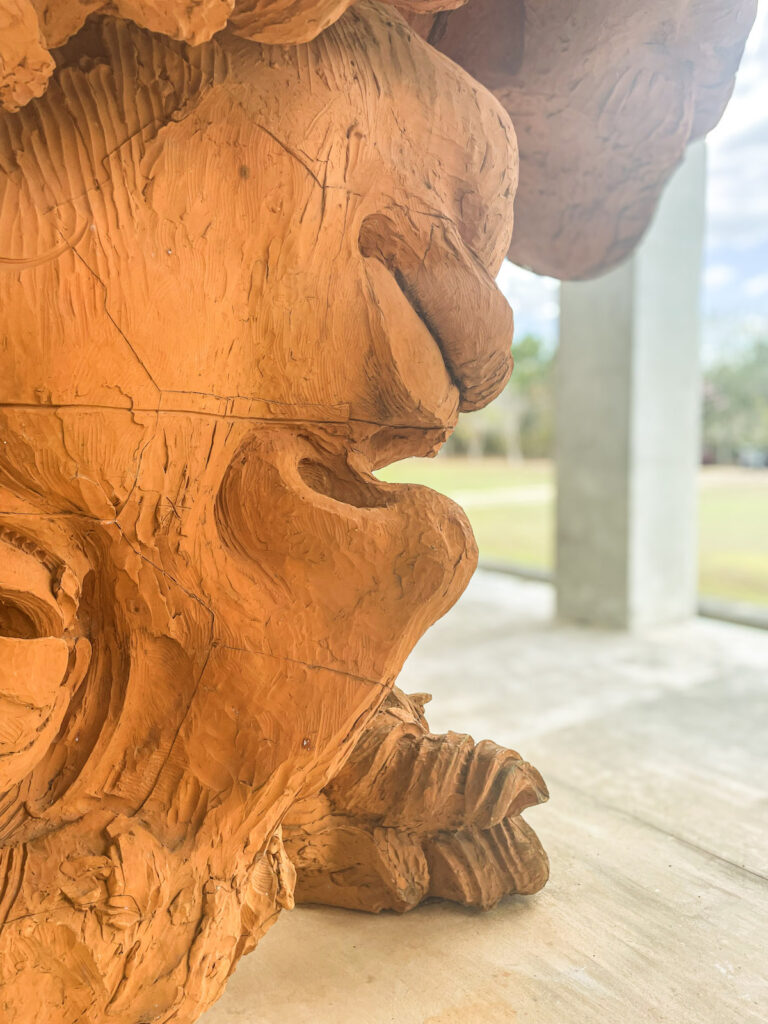
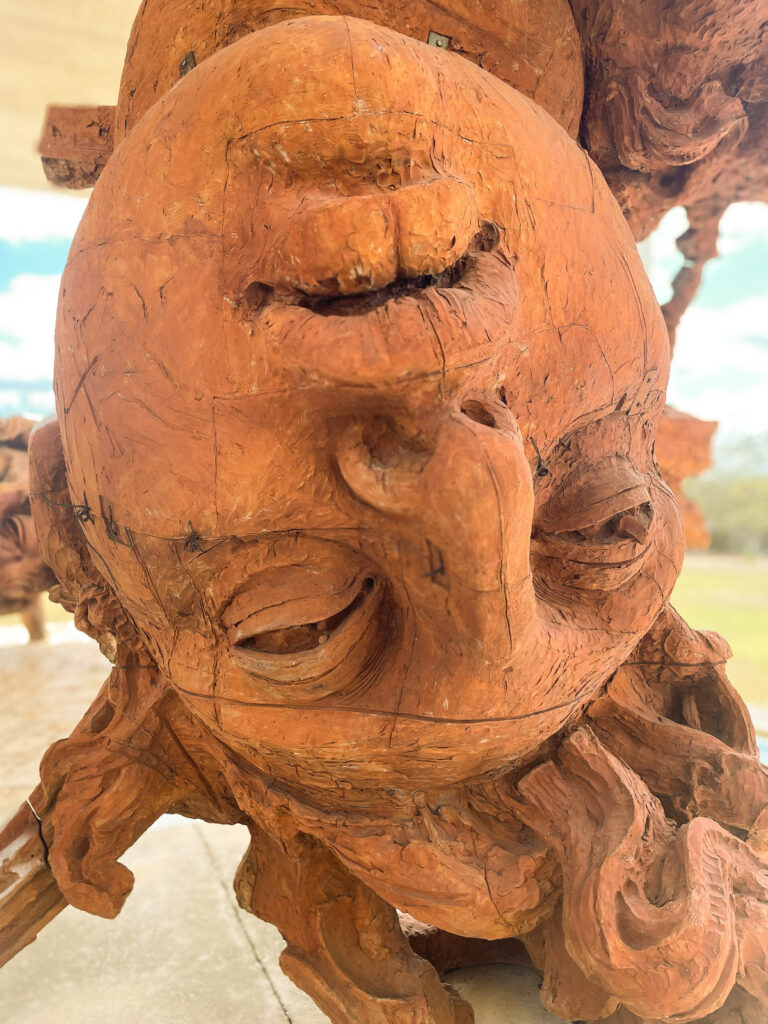
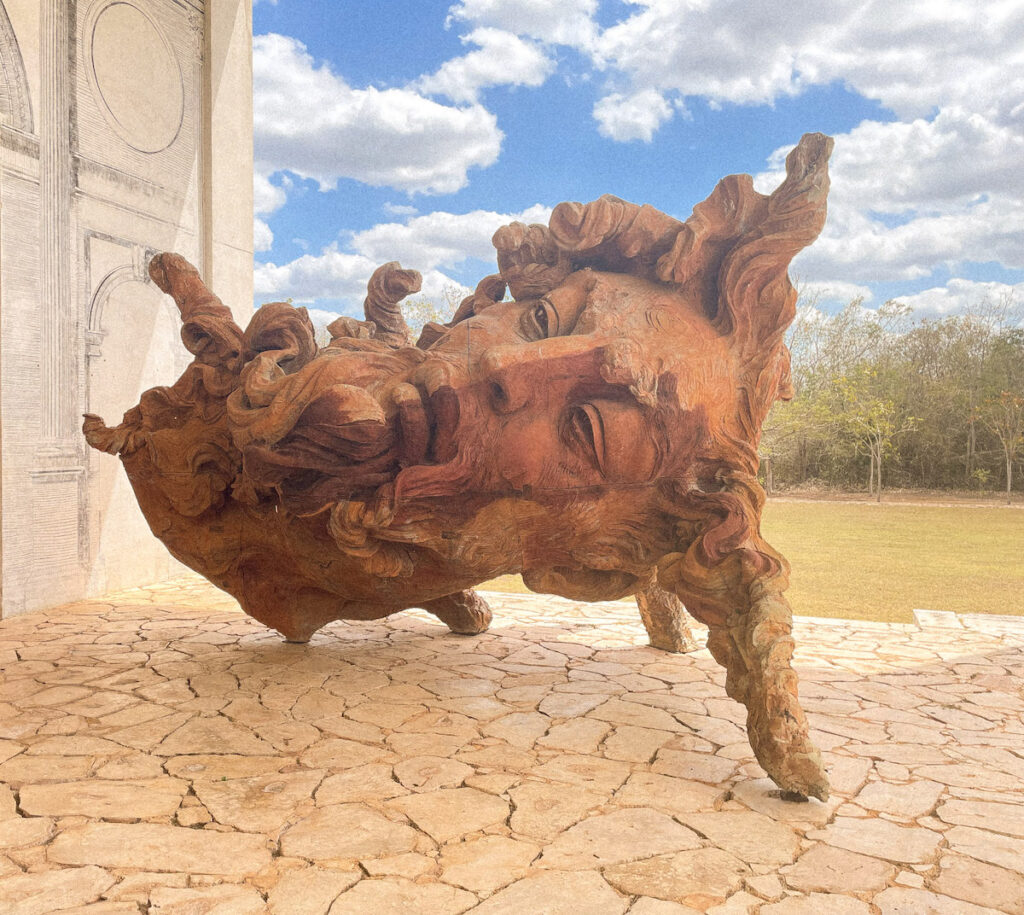
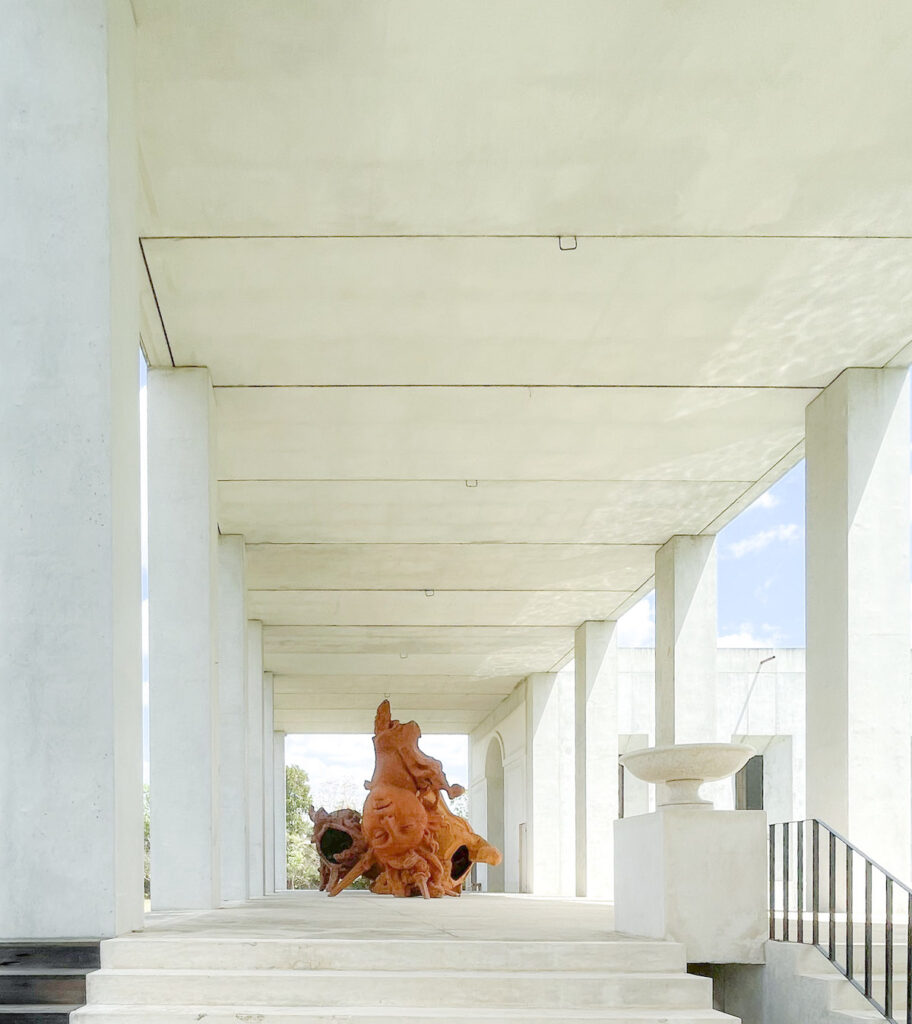
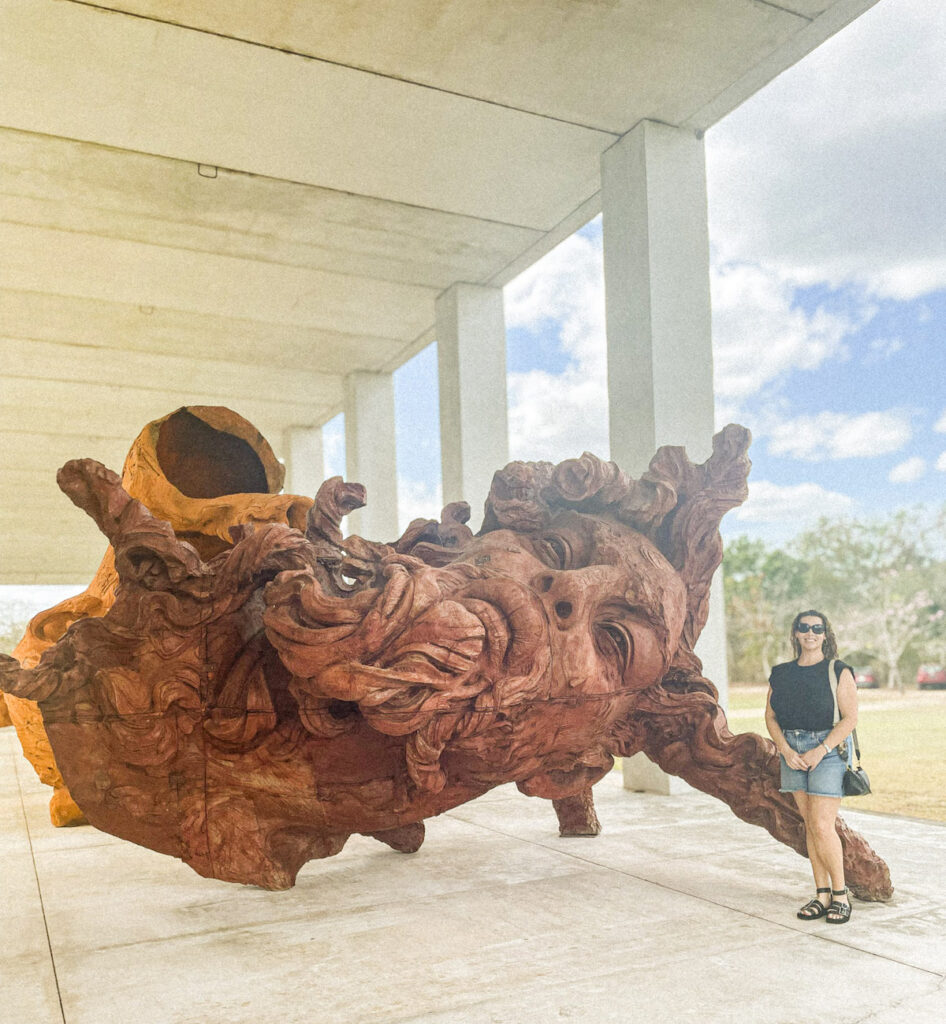
Sparse Grandeur
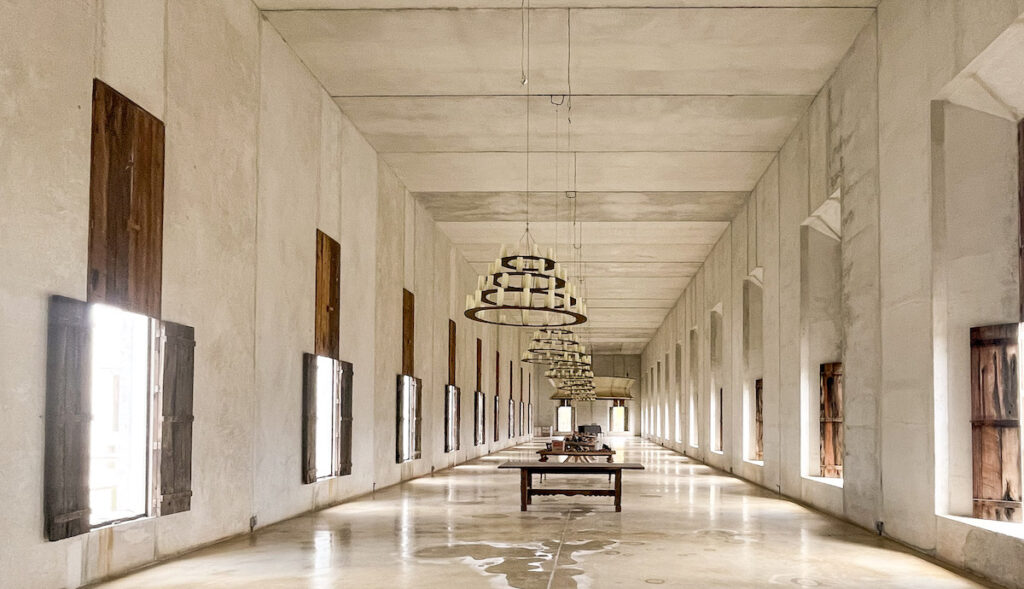
reminded me of the royal palaces you would find in Europe. Photo credit: The World I Roam.
We enter Plantel Matilde through red metal doors. The red strikes me as an odd fit in the midst of so much colorless concrete, until my mind changes to decide that the crimson is playful. Once inside, I soak in the sheer immensity of the hall before me. The overwhelming scale transports me back to the Papal Galleries in the Vatican Museums, where I spent several years leading art history tours.
The gaping difference, of course, is that Papal Galleries are drenched in decadent art and ornamented from floor to ceiling. By comparison, Plantel Matilde is, well, drenched in almost nothing.
Shards of precious pottery rest along the expansive length of a wooden table. Low seating designed by Gabriel Peón rests in an intimate circle, smack-dab and all alone in the middle of an enormous space. A singular Marin artwork, a statue of Saint Anthony, beams down on us from beside an open window. In the corner where the two interior galleries converge, a lofty, ring-shaped structure entitled The Crown levitates above a lovely old piano, a treasured gift from one of Marin’s friends.
Aside from polished concrete floors and a long line of candelabra-style chandeliers, this is all that exists in a space measuring an additional 100-feet than a football field.
It’s the most glorious and austere echo chamber I’ve ever seen. As on the outside, so it is on the inside, I think. A towering blank canvas suited to the contemplation and creation of art.
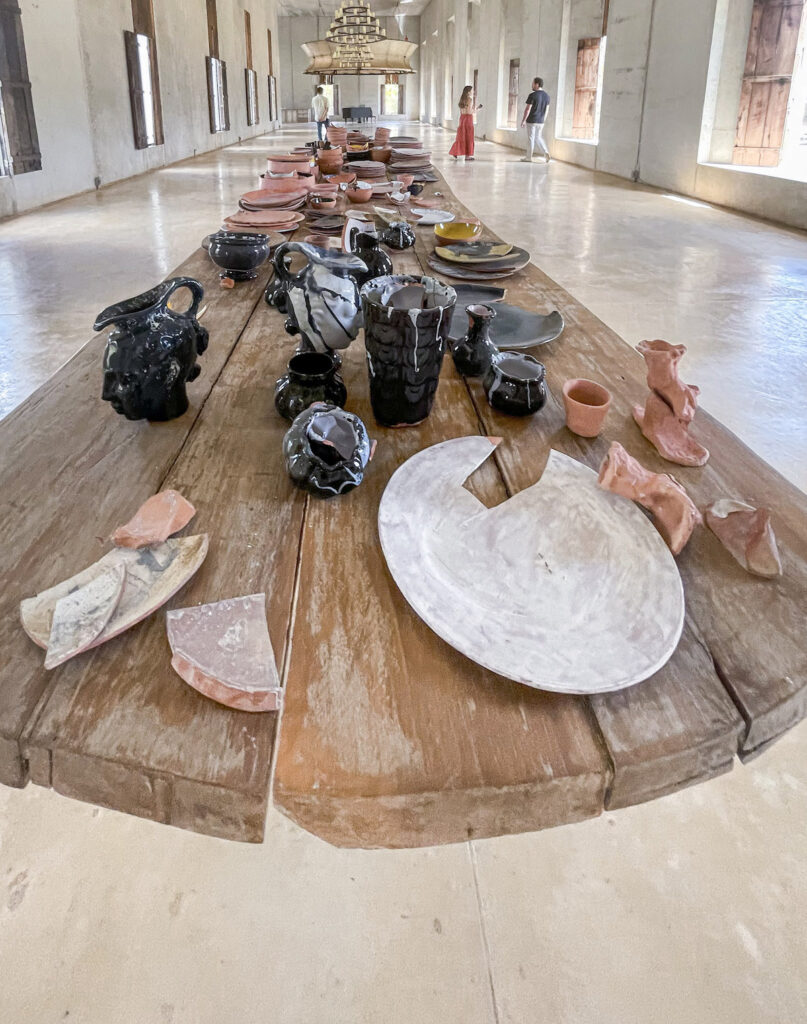
Photo credit: The World I Roam.
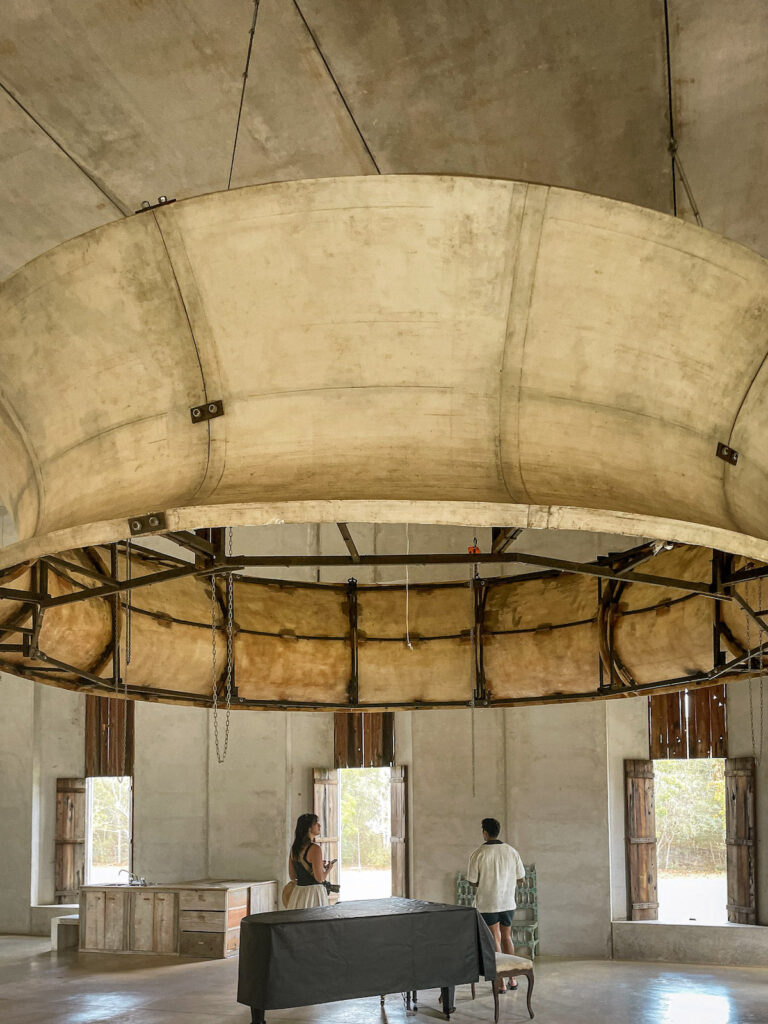
Photo credit: The World I Roam.
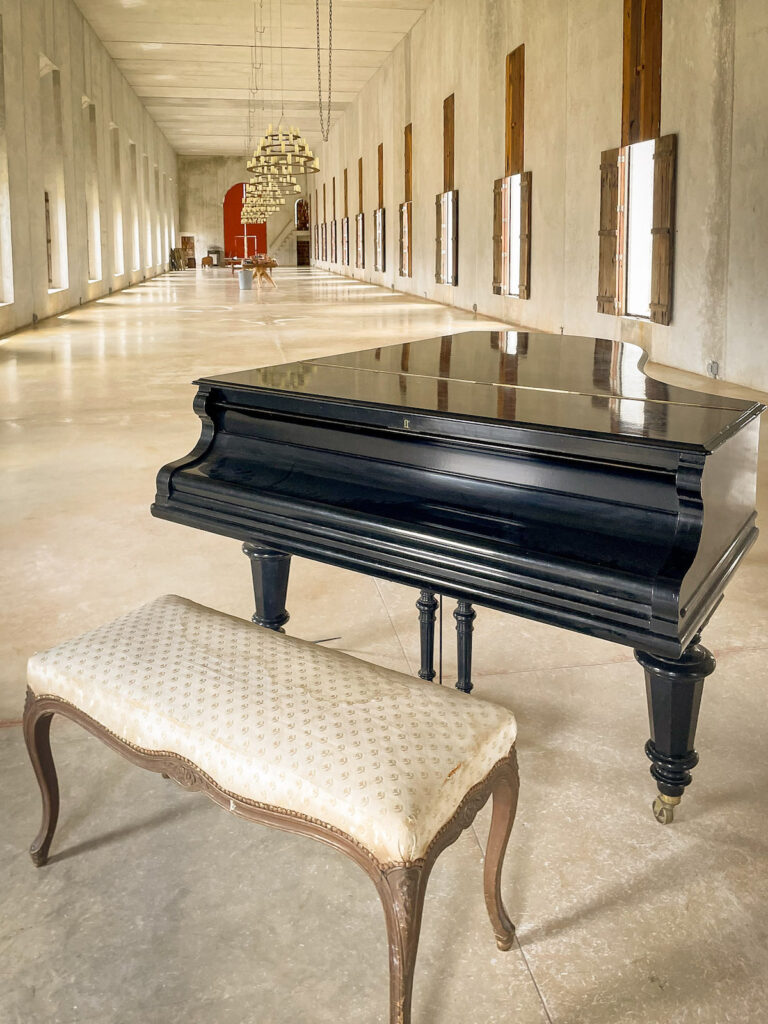
Photo credit: The World I Roam.
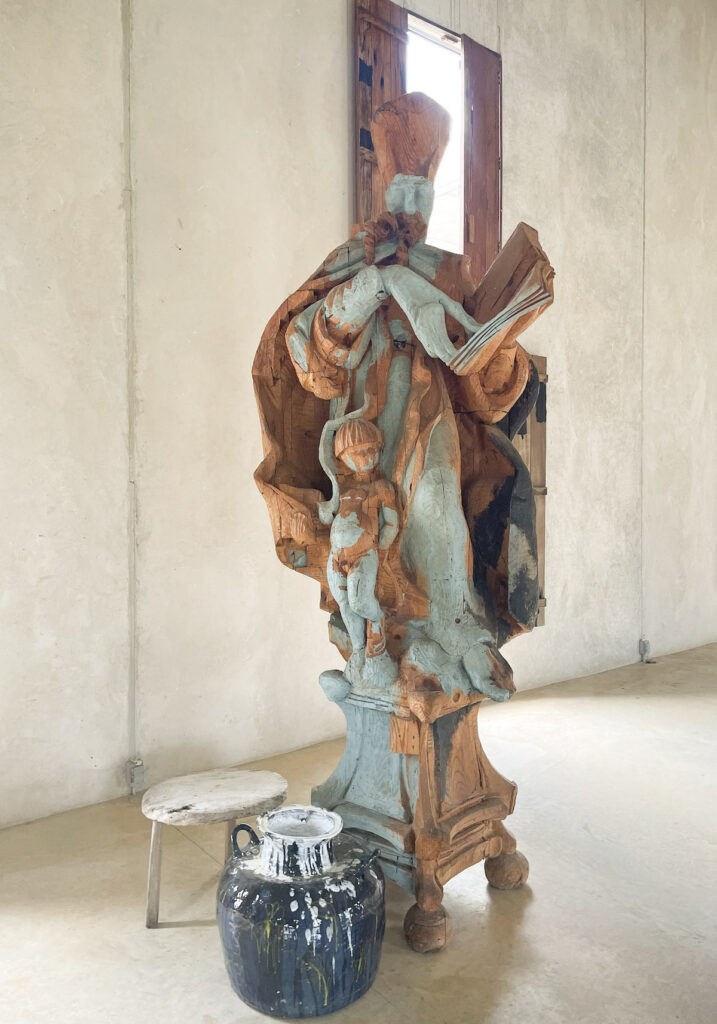
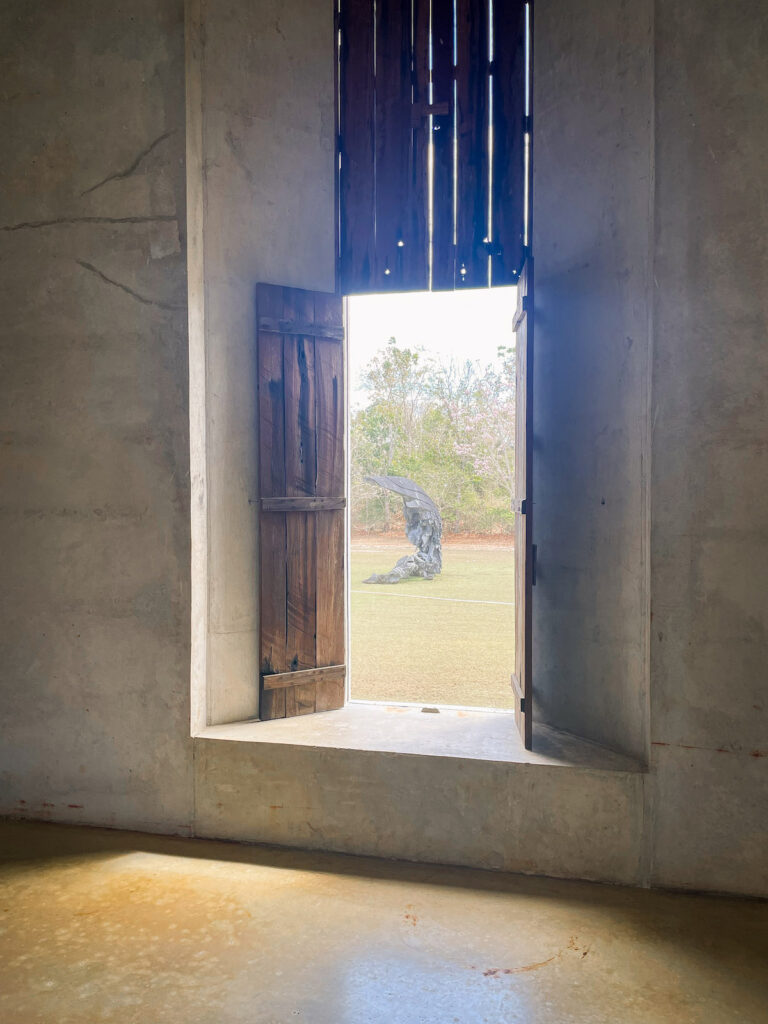
Still, Plantel Matilde carries on underground, where a capacious subterranean living space and studio exists for Marin, as well as the guest quarters for visiting artists. Marin’s space is decidedly off-limits, but Diego leads us down a lengthy corridor where resides a series of guest bedrooms. I’m shocked in no way when Diego calls these the “monk rooms.” Nearly naked sans decor and modest in space, guest bedrooms feature an austere wooden table and springless mattresses under a stamp-sized window in the wall.
Discomfort has long been a catalyst for producing great art.
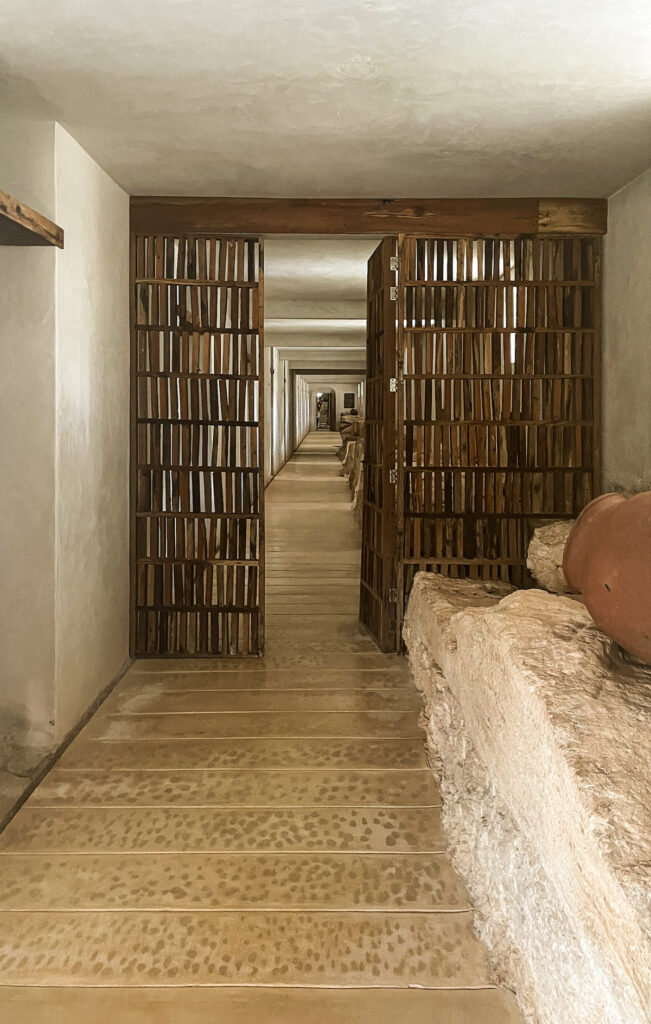
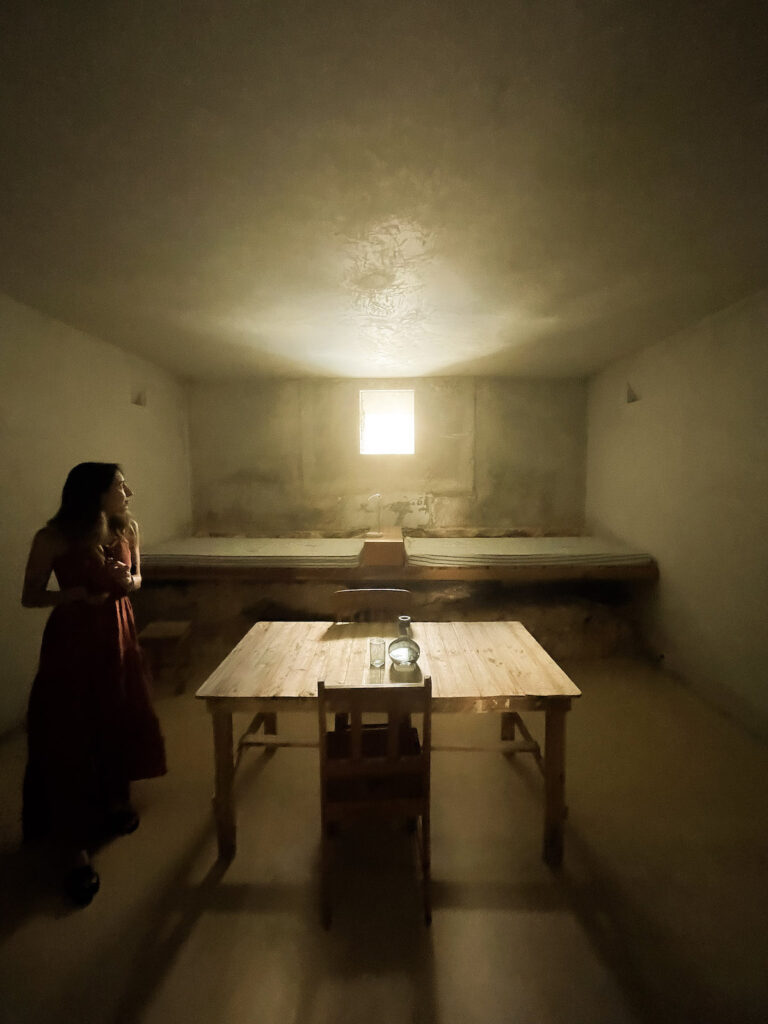
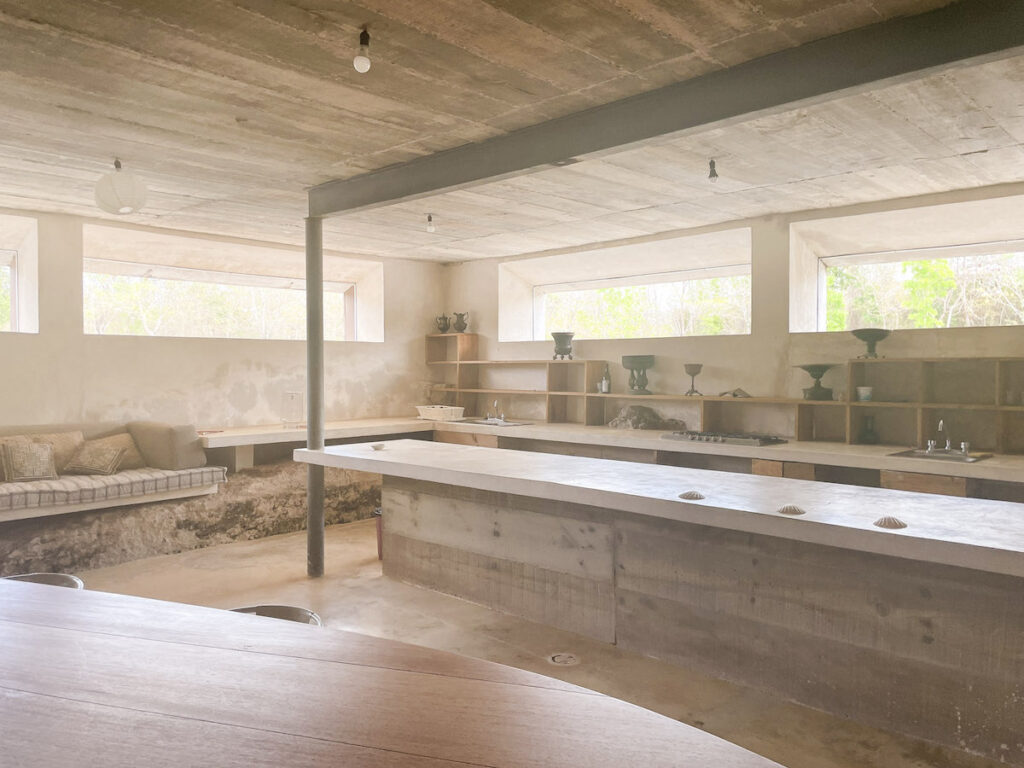
Silence in the Sushine
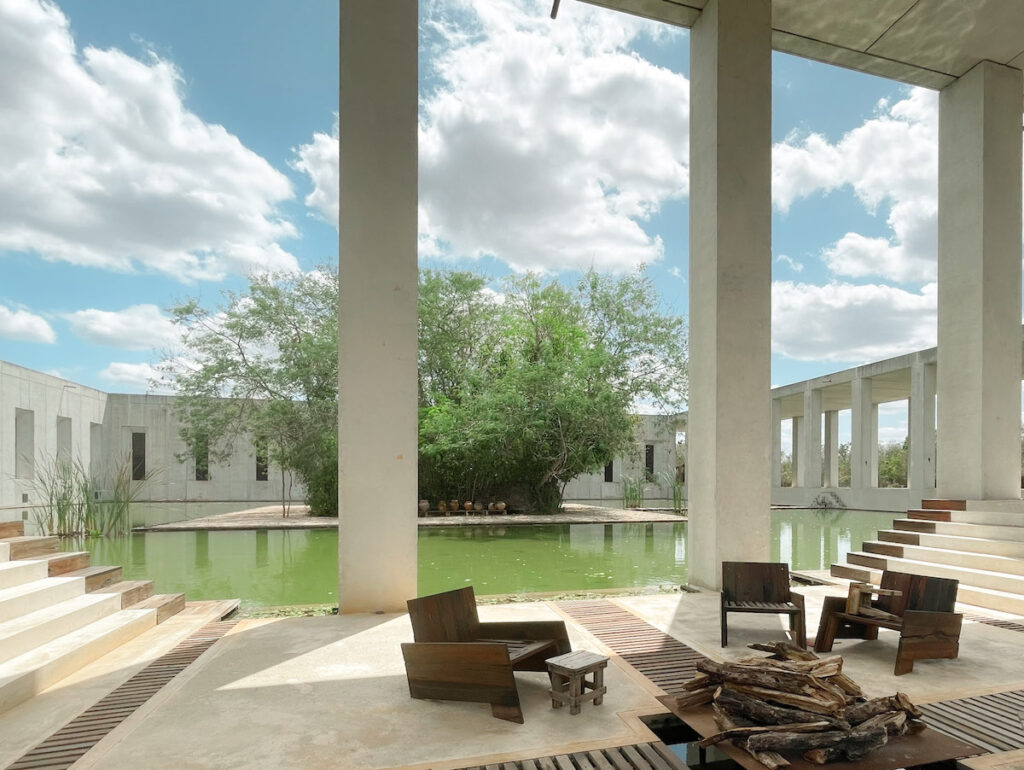
or to the artist’s private residence. Photo credit: The World I Roam.
We re-emerge from the underground back into the sunshine. Here, we’re greeted by a loud silence, a silence living and breathing right here with me. A kind of monastic silence, and it envelops Matilde with a grace befitting a sacred temple.
The stillness inspires me to retrace all I’ve just seen and experienced. Cavernous galleries. Provocative sculptures. Ascetic chambers. Holographic reflections of water on concrete. My initial awe at the mirage in the jungle.
I would give anything to strike a lotus pose on that celestial floating island for the next several hours. Sadly, it isn’t to be. It’s time to head out, Diego informs us. We’re off to the Sac Chich Workshop.
Parting Matilde is such sweet sorrow.
Barro de Sac Chich
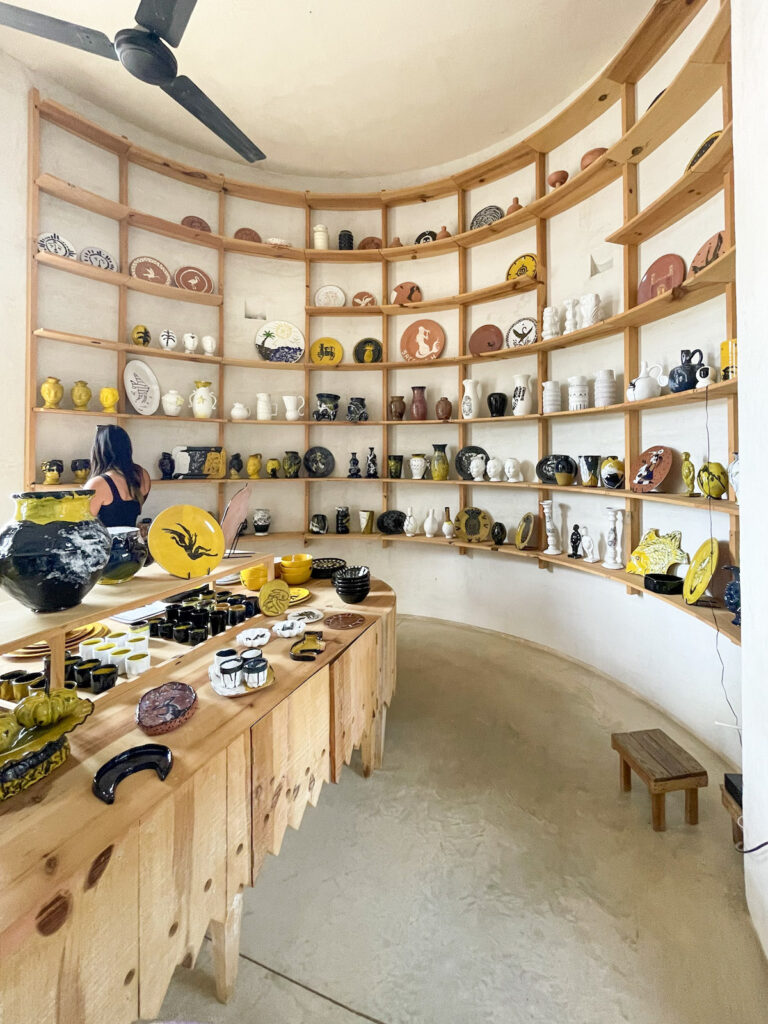
Photo credit: The World I Roam.
Our little caravan follows the red SUV on a short drive to a plaza around the corner. A deserted basketball court missing its nets sits in the center of town. Salsa music pierces the air from a lively house on the square. Two women, one in shorts, the other in jeans, flank the doorway of Barro de Sac Chich — the Sac Chich Workshop — as we make our way inside.
Precious handmade crafts swoon around me in a strict palette of white, black, navy, and yellow, with the occasional touch of terracota. Vases, tableware, serving platters, objets d’arts, finely-woven hammocks, and statement jewelry are on artful display around the shop. Everything is a vision.
Beatriz, who runs the workshop on behalf of the Javier Marin Foundation, greets and introduces us to the local Sac Chich women artisans who are gathered here. She explains how the workshop’s mission is to procure the social, cultural and economic development of the community by helping these women forge a path to entrepreneurship, providing them the tools, materials and working space to realize their artisanal talents. Everything here is fashioned by these women, and anything purchased directly support them.
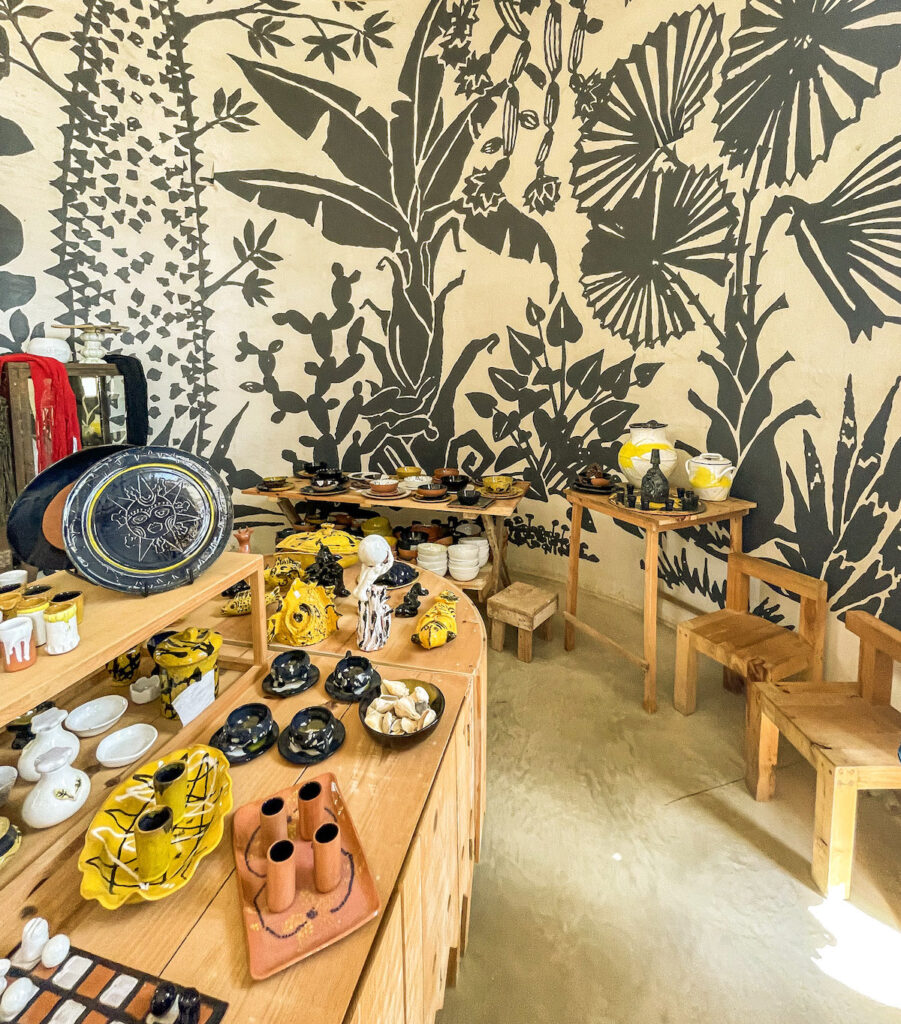
Photo credit: The World I Roam.
My touring companions and I scatter about the shop, sharing how we’re besotted with practically everything. They snap up several enviable pieces before leaving. I buy a pretty yellow serving dish spattered with a symphony of leopard-inspired spots. Beatriz gifts me with a delicate ceramic vase as a token of thanks for supporting the local community through my tour of Plantel Matilde.
I remain in this divine little space chatting with Beatriz for a good half hour. There’s lots to discuss. She generously answers my many questions about the shop and certain pieces. We discover her son used to attend the same school in Merida as mine does now. I lived in Italy for several years, and Beatriz is from Milan.
When I finally leave, I realize I haven’t thanked Diego, but he’s long gone. No doubt returned to the meditative embrace of Plantel Matilde. How I envy him so.
How to Visit Plantel Matilde
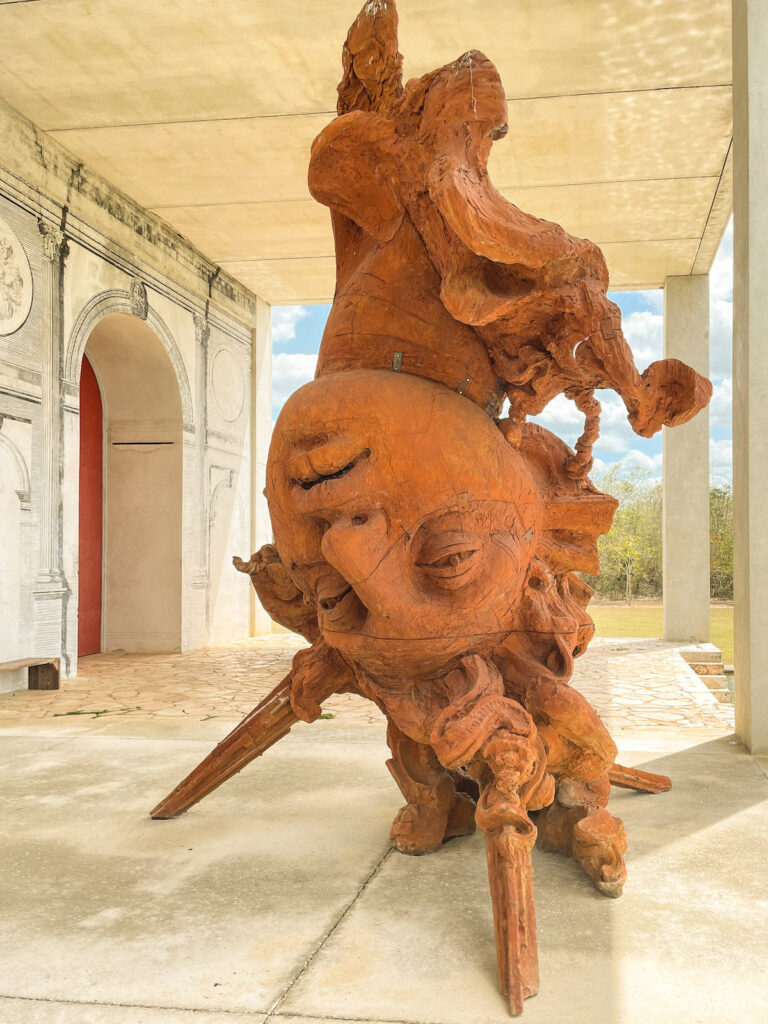
Because Plantel Matilde is a private residence and meditative creative space, the powers that be have zero desire to promote garden-variety tourism here. Tours are not publicized. In fact, Plantel Matilde’s entire online presence states that it’s closed to the public.
However, don’t let this dissuade you. If you’d like to visit Plantel Matilde, you can do so at the foundation’s discretion. They’re open to welcoming visitors who vow to respect the intentions of the space.
Your best bet for how to visit Plantel Matilde is to email the Fundación Javier Marin. Intimate tours for small groups are available on days and times of the foundation’s choosing. As of the time of this writing, tours last roughly 45-minutes to one and a half hours and cost $700 MXN ($35 USD) per person. A second option includes a traditional Yucatecan lunch following the tour, which costs $1,300 MXN ($65 USD) all-included, per person. If this seems expensive, remember you’re exploring the private world of a major Mexican artist. Plus, the cost of the tour goes directly toward supporting the local women artisans of Sac Chich.
If you plan to visit Plantel Matilde from Merida, or from most places in Yucatan, it’s well off the beaten path so you’ll definitely need a rental car. I highly recommend booking with Discover Cars.
The Wrap
If you love exciting contemporary architecture and unique experiences, zoom Plantel Matilde to the top of your list of essential places to visit in Yucatan. Plantel Matilde’s bucolic setting, staggering scale and inspired, jaw-dropping design guarantee it’ll be a major highlight of your trip! If you’d like to discover even more unique places to visit near Merida, head over to this article where I share some of my favorite, less-traveled destinations.
Inspired travels, Friend! 💜



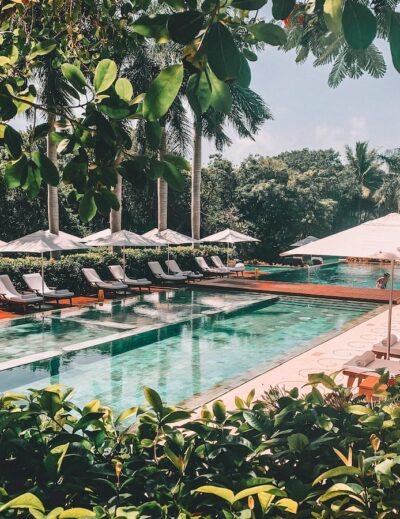
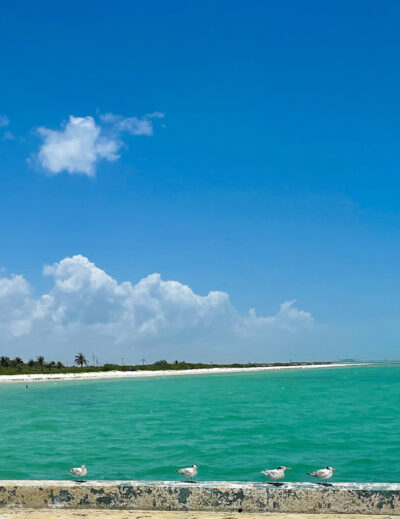
Leave a Reply